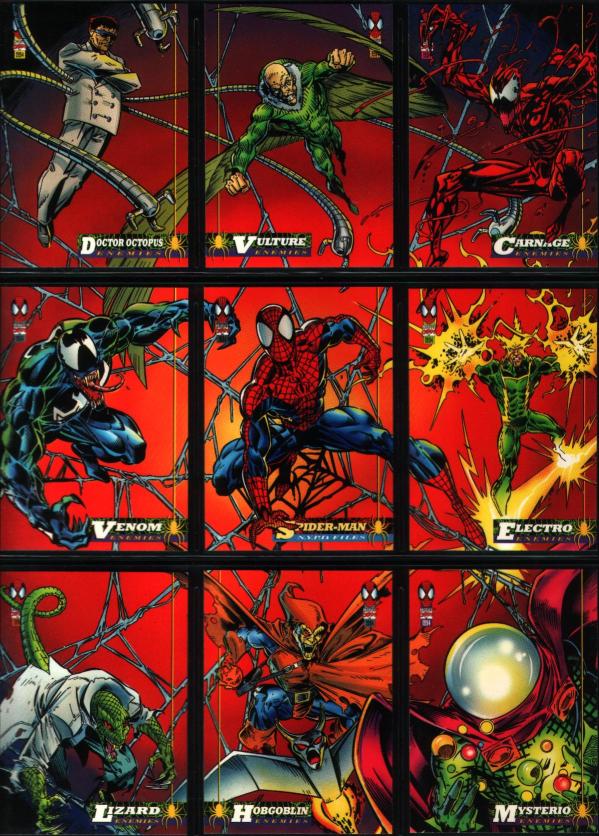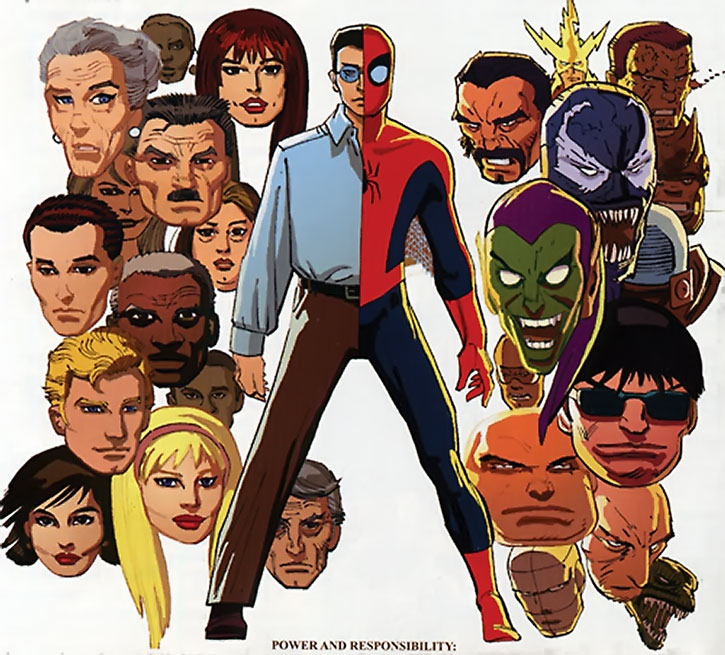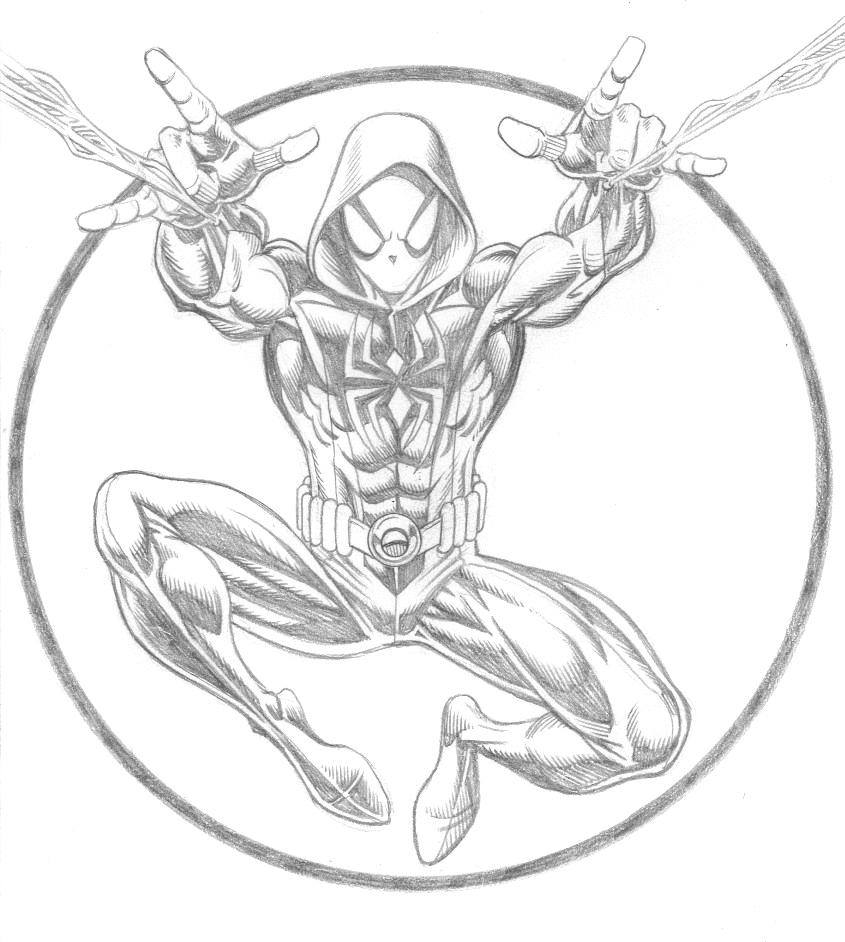
Here’s the analysis of the Crawl Space’s list of the Top 50 Spider-Man stories. That list was compiled by entries from the podcasters, as well as the various reviewers and editorial writers.
What does it tell us?
The most popular writer was Stan Lee, with seven stories on the list: “Horns of the Rhino” (Amazing Spider-Man #41-43), “Sinister Six” (Amazing Spider-Man Annual #1), “Green Goblin Unmasked (Amazing Spider-Man #39-40), Spider-Man No More (Amazing Spider-Man #50-52), Amazing Spider-Man #1, The Master Planner Saga (Amazing Spider-Man #31-33), and Spider-Man (Amazing Fantasy #15.) This highlights the strength of the original source material. There are awards named after Bill Finger, but he’s typically not going to do as well on lists of the best Batman stories as Stan Lee did here. Stan Lee had two stories in the top five.
In second place were Dan Slott and Brian Michael Bendis with six stories each. Slott had Torch Song (Amazing Spider-Man #657), Spider Island (Amazing Spider-Man #666-673), No One Dies (Amazing Spider-Man #655-656), the Renew Your Vows mini-series, the Spider-Man/ Human Torch mini-series “I’m With Stupid, ” and Superior Spider-Man #1-10. Bendis had Power & Responsibility (Ultimate Spider-Man #1-7), Learning Curve (Ultimate Spider-Man #8-13), the Ultimate Clone Saga (Ultimate Spider-Man #97-105), the Death of Spider-Man (Ultimate Spider-Man #156-160), the first year of Miles Morales as Spider-Man and the Spider-Men mini-series. Curiously, Bendis had no stories in the top twenty, suggesting a lack of consensus regarding his stories. Slott had one arc in the top ten. Both currently write ongoing Spider-Man series and have produced more than 150 issues of content, so they’ll have advantages in these kinds of lists, due to the material available to choose from, as well as the increased possibility that we’re all familiar with the work. Less people will have read a 1980s one-shot or a storyline from a satellite book in the 1970s than a recent mini-series. However, these are still impressive results.
JMS had four stories on the list, with Coming Home, the September 11 issue, Doomed Affairs and Back in Black. To be fair, “Coming Home” and ‘The Conversation” are typically considered separate stories. If that had been done here, he’d probably have five stories on the list. Other writers with multiple stories include JM DeMatteis with three (Kraven’s Last Hunt, Spectacular Spider-Man #200, Amazing Spider-Man #400), David Michelinie with three (the wedding annual, Amazing Spider-Man #300, Trial By Jury), Roger Stern with three (The Kid Who Collects Spider-Man, Nothing Can Stop the Juggernaut, Hobgoblin’s first appearance), Tom DeFalco with two (the Alien Costume Saga, Spider-Man VS Firelord), Gerry Conway with two (The Night Gwen Stacy Died, The Original Clone Saga), and Peter David with two (The Death of Jean DeWolff, When Cometh the Commuter.)

The most popular artists are John Romita Jr and Mark Bagley. Romita has two stories from his run with Roger Stern, one from his run with Mackie, and three stories from his run with JMS making the list. Bagley has four stories from Ultimate Spider-Man, in addition to Amazing Spider-Man #400 with DeMatteis and Trial By Jury with Michelinie. He also illustrated part of the Power & Responsibility crossover. Both would likely have one more story on the list if we counted “The Conversation” and “Talking Heads” as unique stories rather than as portions of larger storylines.
The creative teams with the highest representation are Lee/ Ditko and Bendis/ Bagley with four storylines each. Two of the Lee/ Ditko stories are in the top five.
Some first appearances made the list. These included the Rhino, Mary Jane, the Sinister Six, Ultimate Spider-Man, Massacre, the Regent, the Hobgoblin, the Alien Costume, the Kingpin, the black Cat, Morlun, Ezekiel, Venom, and everyone from Amazing Fantasy #15 and Amazing Spider-Man #1.

Quite a few stories had deaths of key characters. Casualties included Ultimate Uncle Ben, Harry Osborn, Ultimate Uncle Ben, the Jackal, Ashley Kafka, Aunt May, Frederick Foswell, the Burglar, Jean Dewolff, the original Uncle Ben, Gwen Stacy and Kraven the Hunter. Curiously, the top four stories all involved a pivotal or recurring character getting killed off.
There are some acclaimed stories that didn’t make this list. Maximum Carnage is a mainstay on these kinds of selections, although it’s probably better as a concept than the execution. The exclusion is to our credit. The Harry Osborn drug saga and Death of Captain Stacy were also not included, although Stan Lee’s run is quite well-represented through other stories, as are those two bad guys. “Power & Responsibility” is the only story with multiple writers to make the list.
There are some stories that aren’t typically found in “Best of” lists. Amazing Spider-Man #1 appeared here, and it’s easy to forget how groundbreaking that issue was, published at a time when the shared universe was a foreign concept, and creating a superhero who wasn’t popular with the public. Back in Black showed Spider-Man pushed to his limits. Superior Spider-Man and Renew Your Vows are two of the most recent stories, so it’s possible that we’ll see these pop up again in new selections, especially with Homecoming coming out so soon (that tends to increase lists about recommended stories for a comics character.)
The Owl/ Octopus war in the top ten is atypical, but it is one of the strongest multi-part storylines in the series’ history. Doctor Octopus is the main villain in three of the top ten stories, adding the Master Planner trilogy and Superior Spider-Man (there is also an argument for the ultimate clone saga). The Kingpin had a strong showing, as the main villain in three stories, with key roles in others (appearing in two issues of the Burglar saga.) Norman Osborn was the main villain in six stories (the Night Gwen Stacy Died, the unmasking, Down Among the Dead Men, Ultimate Spider-Man Volume 1, Death of Spider-Man, Revelations Part 4.) Villains who were the main villains in two stories included the Rhino (his first appearance, the Gauntlet), the Jackal (the original clone saga, Spider Island), the Alien Costume (Alien Costume saga; Venom’s first appearance), the Burglar (Amazing Fantasy #15, Amazing Spider-Man #200) and Kraven (Kraven’s Last Hunt, Spider-Man Blue.)

Mary Jane had a key role in several of the stories, including her first appearance, Spider-Man: Blue, the original clone saga, the Claremont/ Byrne Red Sonja issue of Marvel Team-Up, the wedding, the Doomed Affairs reconciliation, “To Have and to Hold” and the Renew Your Vows mini-series.
One story was from another title: the New Fantastic Four three-parter from that series.
Nine stories were self-contained, mini-series or standalone projects by creative teams who departed the book when their tale was done (even if many would return to the character later or were concurrently writing another Spider-Man book): the Spider-Men mini-series, Renew Your Vows, I’m With Stupid, Whence Commeth the Commuter (a fill-in by Peter David), To Have and to Hold, Mark Millar’s run of Marvel Knights Spider-Man, Spider-Man: Blue, Amazing Fantasy #15, and Kraven’s Last Hunt.
Several stories were sagas, and could have been broken down into shorter component pieces. It was a fine line that made for a weird selection process. Those stories included the first year of the Miles Morales Spider-Man, the 1990s original Clone Saga, the Alien Costume Saga, the Return of the Burglar, Spider-Man: Blue, the Spider-Man/ Human Torch mini-series, Superior Spider-Man, and the Owl-Octopus War.
The list included team-ups with Red Sonja, the Human Torch (twice), Captain America, Daredevil and the Black Cat.
Some of the most popular villains didn’t have lead roles in any of these stories, although they still appeared in part. There is no Lizard story, but he had a nice role in Spider-Man: Blue. There isn’t really a story where Vulture or Electro are the big bad, but the Sinister Six pops up a few times, and they also had memorable showdowns with Spider-Man during Mark Millar’s run on Marvel Knights Spider-Man.
There are also some stories where there isn’t a traditional antagonist, like “The Final Curtain,” the September 11 one-shot, the Wedding, the Gift, and “The Kid Who Collects Spider-Man.”
Looking at the picks, we get a sense of the variety of the character and the series, and a reminder why we love Spider-Man so much, even if we may disagree with individual selections.
Think you can do better? You have about a week to send your picks for the 15 best Spider-Man stories ever to spidertop50cs@gmail.com, so that we can assemble a reader’s list. If there’s anything you haven’t read, get thee to a comic book store, or at least Marvel Digital Unlimited.









